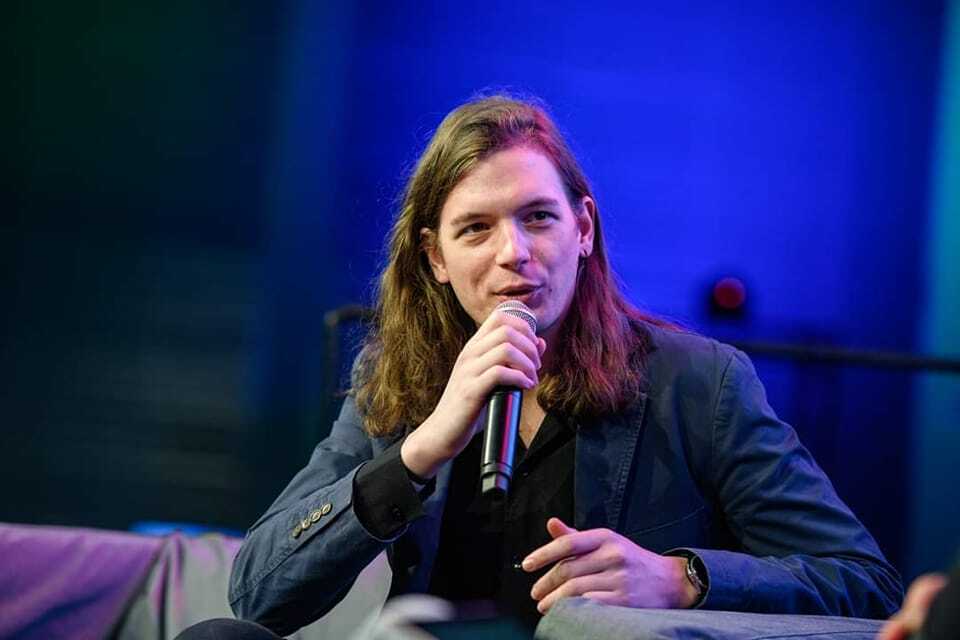We motivate based on experience – that’s why the NetCoGame Research Centre measures gamers
Sponsored content
Computerworld talked to Gergő Juhász ‘Alta’, Deputy Head of JátékosLét Research Centre and Creative Director of Good People Everywhere.
The NetCoGame JátékosLét Research Centre, established in 2014, was the first and still the only Hungarian research centre where games and gamification are the main profile. In the time since then, they have not only attracted the attention of the public because of their annually published JátékosLét Research, but also because they have proven with several successful projects that gamification can be an effective tool for any company, if it is created in the right way and targeted to the right audience.
Among other things, this is what Gergő “Alta” Juhász, Deputy Head of Research and Creative Director of Good People Everywhere talked about in an interview that he gave to Computerworld.
Computerworld: What brought the research centre to life?
Gergő Juhász: Dr. Richárd Fromann, the founder of the research centre, was initially concerned with the question of why a person spends hours in front of a computer for intangible things like getting a more powerful weapon in a game, while the same person might get bored after ten minutes in a maths class. I should add that this was at a time when we were constantly hearing in the mainstream media about the negative, sometimes so-called harmful effects of computer games, and no one was investigating whether they had any positive aspects, and if so, what they were.
The establishment of the research centre itself took four years after the first ideas were formulated, but today we have achieved the goal we set out earlier, and we provide various gamification solutions and developments that improve motivation and efficiency at both individual and organisational levels, for example, by applying gaming elements, gaming mechanisms and gaming dynamics to non-gaming areas of life.
CW: You have been helped in this by a special, internationally unique series of research that has been conducted on Hungarian gamer communities since 2011.
JG: Yes. The interest was demonstrated by the fact that nearly 10,000 people responded to our first JátékosLét survey on a voluntary basis. We reached them through micro-communities of different games, opinion leaders and moderators. Repeated year after year, the survey revealed certain patterns and even categorised players according to different motivational dimensions using a typological model of game motivation. To mention just two extreme types: there are the competitive players, for whom winning is the most important driving force, and the imaginative, collecting players, who are comfortable in their own little world and who are more interested in exploration and in getting to know the terrain and levels as well as possible. I think I can admit that I’m very much a hardcore gamer: I’m a leader-competitor, I like to play a high social role, it’s important to do well so that my fellow players know that I can be counted on. I try to play the same role in my profession.
CW: Which professionals from different fields contribute to the success of your work?
JG: Currently, the team is made up of psychologists, sociologists, andragogists, media and game design experts and development specialists, and thus also functions as a multidisciplinary knowledge centre for gamification research and development.
CW: How do the results of research help companies?
JG: In gamification, we use a lot of things that we’ve gleaned from our research, from our conclusions. On the one hand, there are the “game types” that we mentioned earlier, i.e. the users for whom a system needs to be adapted for optimal functioning, but also the role of motivation and communities. It is often the case that, although a person could work in better conditions for a higher salary, he or she does not change jobs because of his or her colleagues. No better example is needed to understand the power of community. This mentality is also evident in video games. It can be simulated by gamification elements, and even evoke the feeling of working in a team towards a common goal, or of having an experiential learning process, either in a team or in competition with each other.
Basically, we are approached by companies from a wide variety of fields, with a wide variety of goals. For example, we were recently approached by the management of an online gym after they were confronted with the problem that their clients, who could “subscribe” to a particular coach whose advice they could follow from home, were losing motivation over time and were using their services less frequently. The owners wanted to use gamification solutions to change the attitude of their guests. Think about it, the effect of a workout is the result of months of work, it becomes visible, so at any moment we can lose our motivation, i.e. we know the goal, we can say what body we want to see in the mirror, but we can’t see the path to it. As a solution, we suggested that guests could earn reward points after each workout, move up levels to get on leaderboards and redeem points for real objects. This would provide them with the necessary feedback after each training session in the short term and a virtual certificate of achievement in the medium term. These tools make it less likely that a guest will give up halfway through, so that they can achieve the long-term results they set themselves when they first started. Few people may think it today, but with the right solutions, we can get people to do things that may be out of their comfort zone. We are motivated by experience.
CW: How did you get involved with the gaming community?
JG: I’ve been interested in the world of computer games since I was very young and have spent half my life playing them. Beyond the fun, the recreation, I was interested in what made them work well, what my fellow gamers complained about, how to adapt or avoid solutions that worked or were problematic for other games. Then, once in Lakitelek, as a member of the Neumann János College, I was involved in the design of an interactive exhibition house, basically designing the concept of an augmented reality-based educational game. Dr. Richárd Fromann was invited as a guest of a workshop and I would have liked to work with him. After being given the opportunity by him, over time I went from an enthusiastic amateur to a game design expert and researcher. I remember that after the first couple of times I was involved in gamification projects, it became more and more apparent that I could use the knowledge I had acquired in creative fields, but also communicate well with people. Nowadays, as a deputy head of a professional team, I work with developers and graphic designers, I have a growing role in conceptualising and presenting more and more on the subject. I feel very lucky to be able to use this kind of knowledge in my work. I also see my work as a good game.
CW: How much of your passion for games has remained as you’ve become more familiar with their inner logic?
JG: When time allows, I still spend many hours playing MMORPG-type games (MMORPG stands for Massively Multiplayer Online Role-Playing Game, a multiplayer online role-playing game where multiple players can interact in a virtual world at the same time – ed.). But in terms of the way I’ve changed my attitude, I can’t play a game without knowing why the game developer chose the particular solution at that point. I could compare it to when I was a kid and I was just admiring magic tricks, and then I started to master them myself, and it turned out that most of them were based on the same pattern, which made them lose a bit of their charm. Probably anyone who works in the film industry, for example, cannot watch a film without analysing what they have seen. As a game design expert and researcher, I am the same with games.
CW: You also work as the creative director of an innovative app. They have set a very lofty goal for Good People Everywhere, a complex community platform.
JG: At Good People Everywhere, we strive to prove that the world is a wonderful place. We are bombarded with news stories of accidents, disasters and deaths every day. We are confronted with repressed aggression, different expressions of hatred on social media. In such a situation, it is difficult to see the positive in life, however much we look for it. The app aims to show people the good things that are happening in the world. This goes back a little bit to what I said about the importance of communities in gamification: the quality of our lives is determined by our relationships, by the people around us, and it’s important to have people not just around us, but with us. It makes a big difference. We try to find good people so that through them we can see the good things in the world that good people do.
please make a donation here
Hot news
Hungarian banking system declared stable and highly profitable in latest central bank report
Breaking: Forint hits new low against the euro as exchange rate surges past 413
Hungary eases prison visit rules, allowing more humane family reunions
Filipino workers step in to milk cows in a small Hungarian village
Budapest city assembly postpones deputy mayor vote amid political tensions
Hungary’s 2025 budget aims for sustainable growth and increased support for families, businesses, and security




